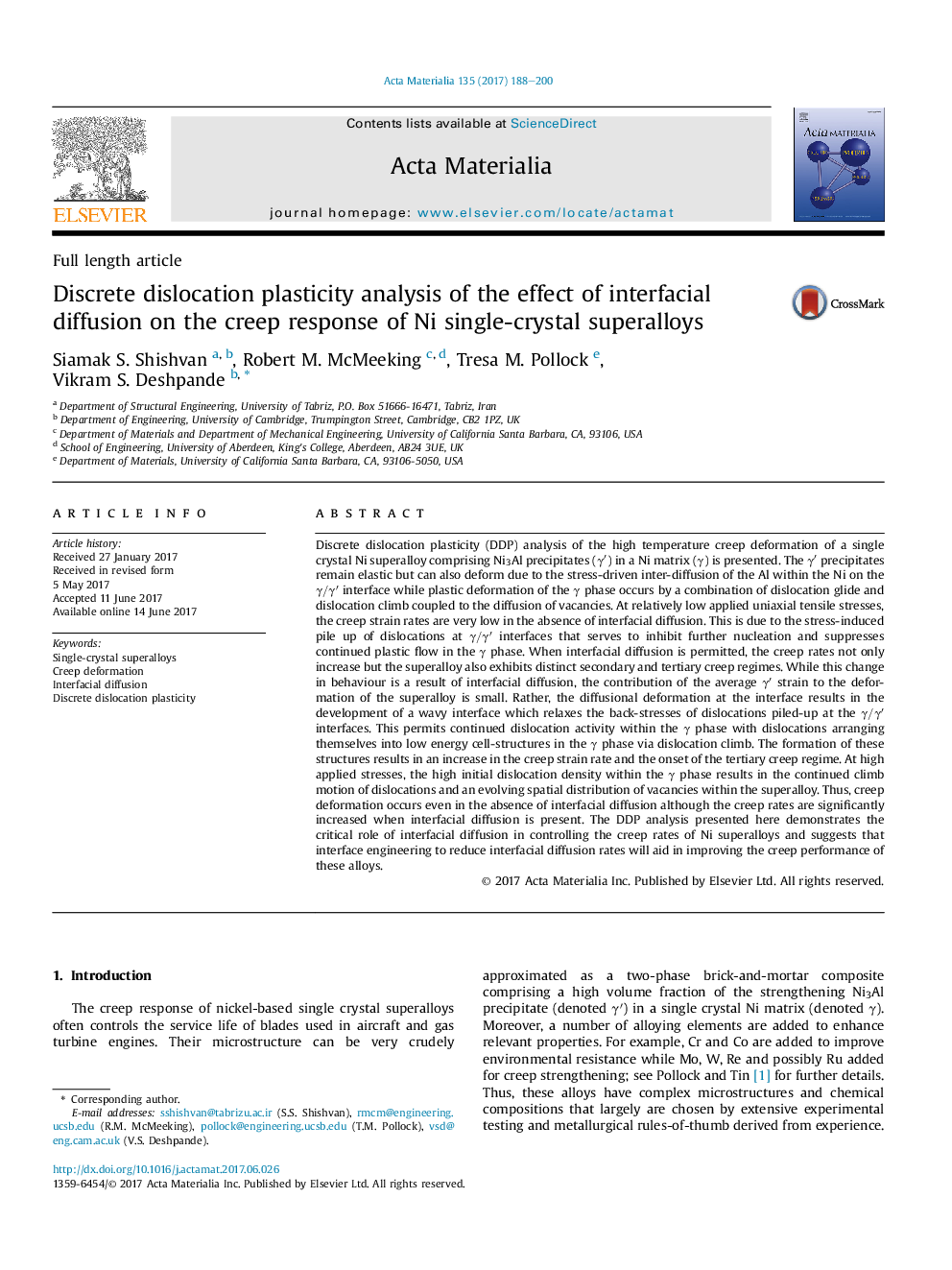| کد مقاله | کد نشریه | سال انتشار | مقاله انگلیسی | نسخه تمام متن |
|---|---|---|---|---|
| 5435907 | 1509541 | 2017 | 13 صفحه PDF | دانلود رایگان |

Discrete dislocation plasticity (DDP) analysis of the high temperature creep deformation of a single crystal Ni superalloy comprising Ni3Al precipitates (γâ²) in a Ni matrix (γ) is presented. The γⲠprecipitates remain elastic but can also deform due to the stress-driven inter-diffusion of the Al within the Ni on the γ/γⲠinterface while plastic deformation of the γ phase occurs by a combination of dislocation glide and dislocation climb coupled to the diffusion of vacancies. At relatively low applied uniaxial tensile stresses, the creep strain rates are very low in the absence of interfacial diffusion. This is due to the stress-induced pile up of dislocations at γ/γⲠinterfaces that serves to inhibit further nucleation and suppresses continued plastic flow in the γ phase. When interfacial diffusion is permitted, the creep rates not only increase but the superalloy also exhibits distinct secondary and tertiary creep regimes. While this change in behaviour is a result of interfacial diffusion, the contribution of the average γⲠstrain to the deformation of the superalloy is small. Rather, the diffusional deformation at the interface results in the development of a wavy interface which relaxes the back-stresses of dislocations piled-up at the γ/γⲠinterfaces. This permits continued dislocation activity within the γ phase with dislocations arranging themselves into low energy cell-structures in the γ phase via dislocation climb. The formation of these structures results in an increase in the creep strain rate and the onset of the tertiary creep regime. At high applied stresses, the high initial dislocation density within the γ phase results in the continued climb motion of dislocations and an evolving spatial distribution of vacancies within the superalloy. Thus, creep deformation occurs even in the absence of interfacial diffusion although the creep rates are significantly increased when interfacial diffusion is present. The DDP analysis presented here demonstrates the critical role of interfacial diffusion in controlling the creep rates of Ni superalloys and suggests that interface engineering to reduce interfacial diffusion rates will aid in improving the creep performance of these alloys.
194
Journal: Acta Materialia - Volume 135, 15 August 2017, Pages 188-200